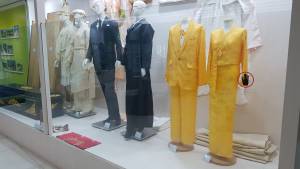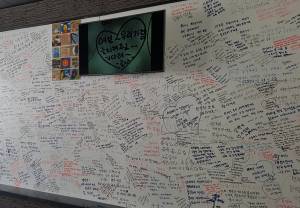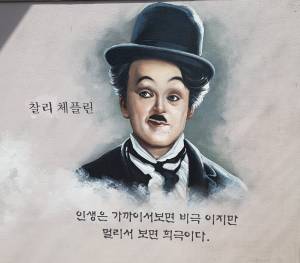During the Joseon era, young people demonstrated filial piety by living at their parents’ grave sites for three years and then maintaining them in perpetuity. Cremation in that neo-Confucian society was strictly forbidden—except for the lowest vagabonds and criminals. To burn the body of your deceased loved ones was considered cruel, almost like causing them a second death.
But with Korea moving into modern and more transient times, cemeteries filled up. As burial became increasingly problematic, people started to see cremation as a reasonable alternative. Thirty years ago, just 18% of dead Koreans were cremated. That number is now approaching 90%.
There used to be just a few crematoriums in Korea, and they ran on a part-time basis. Now 60 are in existence, and they are much busier. This is part of a world-wide trend, although the change has been especially fast and dramatic here. When the Ministry of Health and Welfare conducted a survey a couple of years ago, Koreans were quite pragmatic about cremation. Most were in favor because it was more hygienic, more convenient and less expensive. It is indubitably less expensive—about one-quarter the cost of burial, apart from the issue of maintenance.
Most were in favor because it was more hygienic, more convenient and less expensive. It is indubitably less expensive—about one-quarter the cost of burial, apart from the issue of maintenance.
The government is in the process of building more facilities to meet the growing demand for cremation.
With all that in mind, I called a taxi on March 16 and asked the driver to take me to Seoul Memorial Park in Yangjae-dong. Upon arrival, I entered as if I were a bereaved friend of some person whose earthly life had just concluded.
This 37,000-square-meter eco-friendly complex, designed by the Haeahn architectural firm, opened in early 2012. Operating under the aegis of the Seoul Metropolitan Facilities Management Corporation, it has a central reflecting pool, two stories of ritual spaces designed to comfort visitors, indirect lighting and vaulted ceilings.
 Besides the obligatory dining room, there is a museum of sorts, with photos and drawings of dolmens, tombs and funerary practices of the past, along with caskets, coffins and clothing worn by mourners. An array of urns are presented and on sale.
Besides the obligatory dining room, there is a museum of sorts, with photos and drawings of dolmens, tombs and funerary practices of the past, along with caskets, coffins and clothing worn by mourners. An array of urns are presented and on sale.
Outdoors, I saw five panels that feature drawings of William Shakespeare, Charlie Chaplin, Andrew Matthews (an Australian writer of self-help books of whom I was previously unaware), Helen Keller, Winston Churchill and Lee Hae-in, also known as “Sister Claudia.” All had written or spoken evocatively about death.
Not far away is a beautifully rendered bronze sculpture entitled “Ascending to Heaven,” done by Im Yeong-sun in 2011. It consists of two strong and healthy figures, a nude female below and a nude male above—discreetly draped, of course. The adjoining plaque says that he represents an angel leading her to a deep and tranquil place.
After half an hour, I met an employee of Seoul Memorial Park who led me to the office of one of the directors. This man agreed to show me more, but with the caveat that I could not mention his name or quote him directly. For the chance to go behind the scenes, as it were, I would happily abide by those rules.
quote him directly. For the chance to go behind the scenes, as it were, I would happily abide by those rules.
He said that between 40 and 50 cremations take place there every day, with a limit of 65 and that the 11 furnaces use something called the “counter-flow combustion method.” They get rather hot: between 800 and 1,000 degrees Celsius. Twice we stood back as families, holding shrouded photos of the deceased, wailed and walked by. When they got inside the alcoves where their designated furnaces were located, the crying grew even louder and more heart-rending. These were the final goodbyes. We respectfully watched as the deceased were slid inside and the waist-level door shut firmly.
My guide stated that the incineration of a person takes about 100 minutes, leaving ashes with the consistency of sand. They are left to cool for an hour, after which the family receives them in their chosen urn; that ceremony I did not witness.
In answer to one of my questions, he discussed the treatment of ashes. One method is to preserve them in a columbarium. But I had assumed that people were also free to spread them on a mountaintop of  their choosing, from the back of a ferry going to Jeju Island or in the remote countryside. Not so. For a variety of legal and environmental reasons, permission must be secured from local and national officials, he said.
their choosing, from the back of a ferry going to Jeju Island or in the remote countryside. Not so. For a variety of legal and environmental reasons, permission must be secured from local and national officials, he said.
I thanked the director and walked outside where I took note of an entire wall given over to messages to and about people who had died and been cremated. As solemn as all that was, no more than 20 meters away stood a group of young men dressed in black. Despite mourning the passing of a loved one, they were laughing, telling jokes and puffing on cigarettes. Life goes on.


11 Comments
While this makes perfect sense, I don’t like the thought of creamation for me. I agree it’s time has come. I have been trying to sell 6 cemetery plots for a friend. No interest.
As I watched those two corpses move into the furnaces, I kept thinking about them being burned, burned, burned. But ok, they are dead. The alternative is that you are put in a coffin six feet below and you slowly deteriorate. Which is better or worse? And remember, this was strictly about Korea. You are in the USA.
I agree with cremation.
But we buried our parents.
How about your mother?
Is she alive now?
No, the individual to whom you refer is dead…totally dead…completely dead.
I am so sorry for your loss.
My husband was cremated In September 2020. I will travel to all of his favorite places to scatter his ashes: Louisville and Lexington Kentucky, hiking trails in Colorado, Kauai Hawaii. I actually have legal paperwork allowing me to travel with his ashes. Like Vicki, not fond of the idea of cremation, but, it is just the earthly body. I will already be in heaven.
I lived in Lexington in 1977 and 1978!
Yeah, life goes on.
My mother was buried 35 years ago, and my father 25 years ago.
I’d always felt sorry for them being buried far apart from each other.
Their remains were put together, cremated, and put in an urn 5 years ago.
They’re now in the family tomb with other relatives.
Their bodies were first buried and later cremated.
Bodies are gone, but memories go on.
Thank you Richard for your good writing.
Tim, that is quite an interesting family story.
More and more people are being cremated. Ted and I haven’t made that final decision. We are leaning toward cremation and being buried in a plot his grandmother bought years ago. My dad does not want to be cremated. We will grant his final wishes. We still visit the gravesites of our loved ones and put seasonal flowers on them. I doubt that will continue when we are gone.
So it appears that the urns holding your and Ted’s ashes will be put in a columbarium.
Add Comment